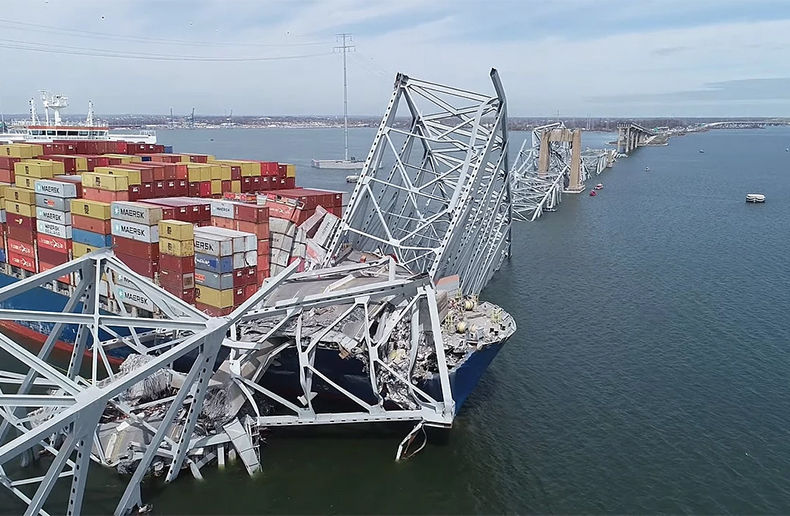When the container ship Dali hit the Francis Scott Key Bridge in Baltimore at 1:30a.m. on March 26, killing at least two people and blocking access to one of the busiest ports on the United States’ east coast, analysts began figuring out the implications for insurers, resulting in a pair of research reports, one from AM Best and another from Morningstar DBRS. Both say reinsurers will likely bear most of the insured losses resulting from the event.
In the first report, Marine Mutual Britannia Confirms Insurance Role in Baltimore Bridge Ship Collision, AM Best reports that the International Group of P&I Clubs, “which collectively insure approximately 90 per cent of the world’s ocean-going tonnage,” will likely play a role in helping the Britannia P&I Club. “As part of the International Group’s pooling arrangements, member clubs mutually reinsure each other by sharing claims above $10-million,” AM Best writes. Both that firm and Morningstar DBRS add that the group typically buys reinsurance up to $3.1-billion (all figures in U.S. dollars), for attachment points above $100-million.
“The attachment point represents the dollar amount of insured losses retained by the group,” Morningstar DBRS researchers write in their own report, entitled Baltimore Bridge's Losses Within Absorption Capacity of the Insurance Industry but Will Add Pressure to the Marine Market. “We expect that the reinsurers participating in the group’s reinsurance pool will bear most of the insured losses of this event.”
Both reports itemize the different contracts which will be tested, including property, protection and indemnity (P&I), cargo, liability, trade credit and business interruption policies.
Litigation will determine legal responsibility
“We anticipate litigation will immediately ensue to determine legal responsibility for the involved parties and their insurers,” Morningstar states. “Subrogation among insurers is likely to follow as courts assign legal responsibility. This means that if courts determine that the ship owner is liable for the accident, then the insurers of the bridge and the port can recover insured losses from the liability insurers of the ship.”
In 2023, the Port of Baltimore handled over $80-billion in cargo, they add, noting that it is the biggest U.S. port for car shipments. Morningstar estimates total insured losses could be in the $2-billion to $4-billion range. “Despite the potential outsized insured losses, we expect that they remain well within the absorption capacity of the global insurance industry as claims will be ultimately paid by a large and diversified pool of insurers and reinsurers,” they write. That said, they add the incident will likely add upward pressure to marine insurance pricing globally.
AM Best reports that the owners and managers of the vessel are cooperating fully with the federal and state government agencies under an approved incident response plan.







